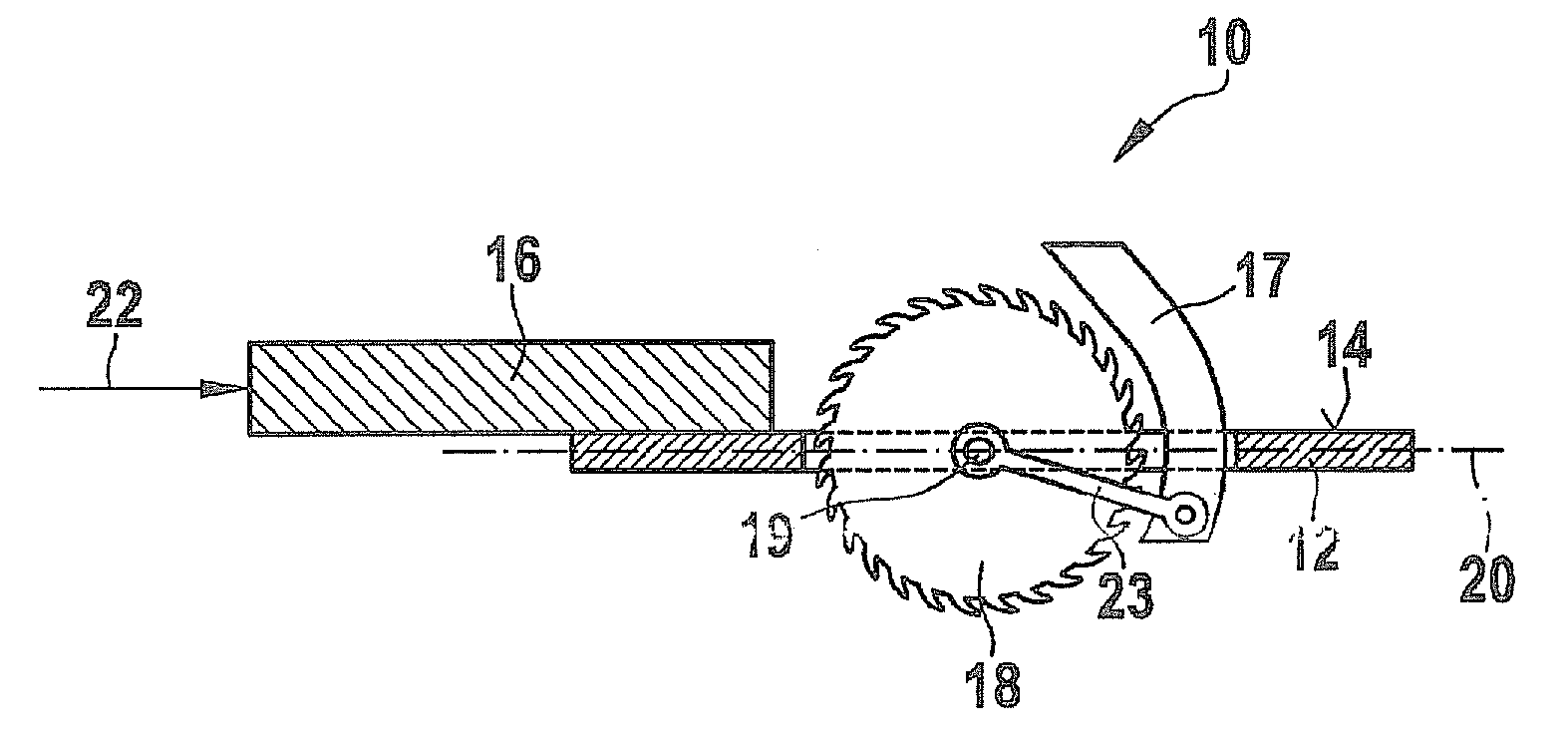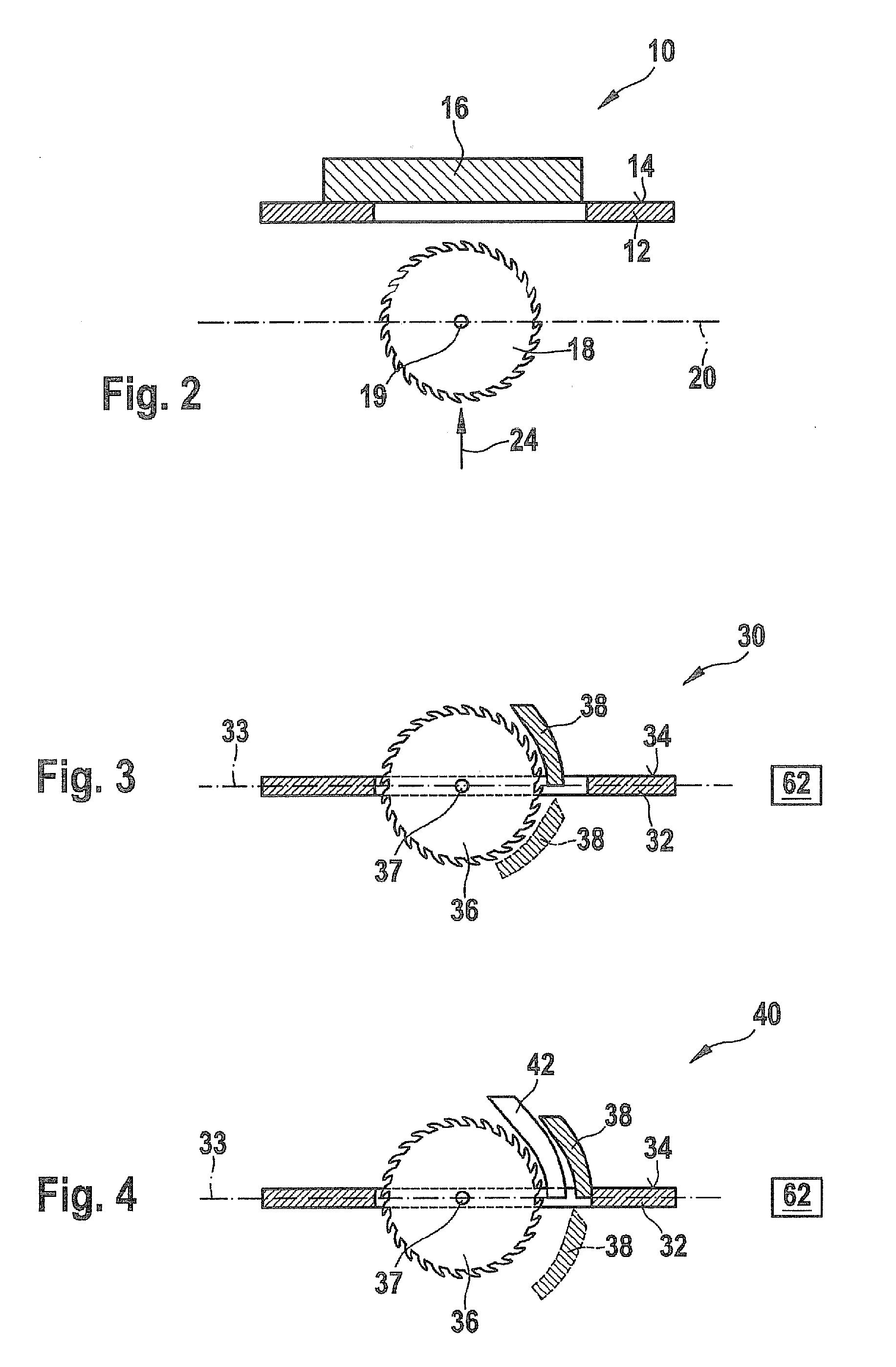Circular saw
a circular saw and saw blade technology, applied in the field of circular saws, can solve problems such as time and cost savings, and achieve the effect of reducing the number of work accidents
- Summary
- Abstract
- Description
- Claims
- Application Information
AI Technical Summary
Benefits of technology
Problems solved by technology
Method used
Image
Examples
Embodiment Construction
[0040]Identical or corresponding components are denoted below by the same reference numerals.
[0041]FIGS. 1a, 1b, and 1c show schematic views of states of a conventional table circular saw while a through cut is being made in a workpiece, the cut being made in the workpiece starting from the edge of the workpiece. The table circular saw, which is denoted in general by reference numeral 10 in the stated figures, includes a saw table 12 having a workpiece support surface 14 on which a workpiece 16 is positioned. Table circular saw 10 also includes a saw blade 18, which with the aid of a motor (not illustrated) may be rotationally driven about a rotational axis 19 which does not rotate, and moved up and down. The saw blade may also be swiveled about an axis 20 in a known manner to make angled cuts. A splitting wedge 17 which is used for guiding workpiece 16 and protecting the operator is situated behind saw blade 18 as viewed by the user (to the right in FIGS. 1a through 1c) when table ...
PUM
| Property | Measurement | Unit |
|---|---|---|
| angle | aaaaa | aaaaa |
| angle | aaaaa | aaaaa |
| vacuum | aaaaa | aaaaa |
Abstract
Description
Claims
Application Information
 Login to View More
Login to View More - R&D
- Intellectual Property
- Life Sciences
- Materials
- Tech Scout
- Unparalleled Data Quality
- Higher Quality Content
- 60% Fewer Hallucinations
Browse by: Latest US Patents, China's latest patents, Technical Efficacy Thesaurus, Application Domain, Technology Topic, Popular Technical Reports.
© 2025 PatSnap. All rights reserved.Legal|Privacy policy|Modern Slavery Act Transparency Statement|Sitemap|About US| Contact US: help@patsnap.com



